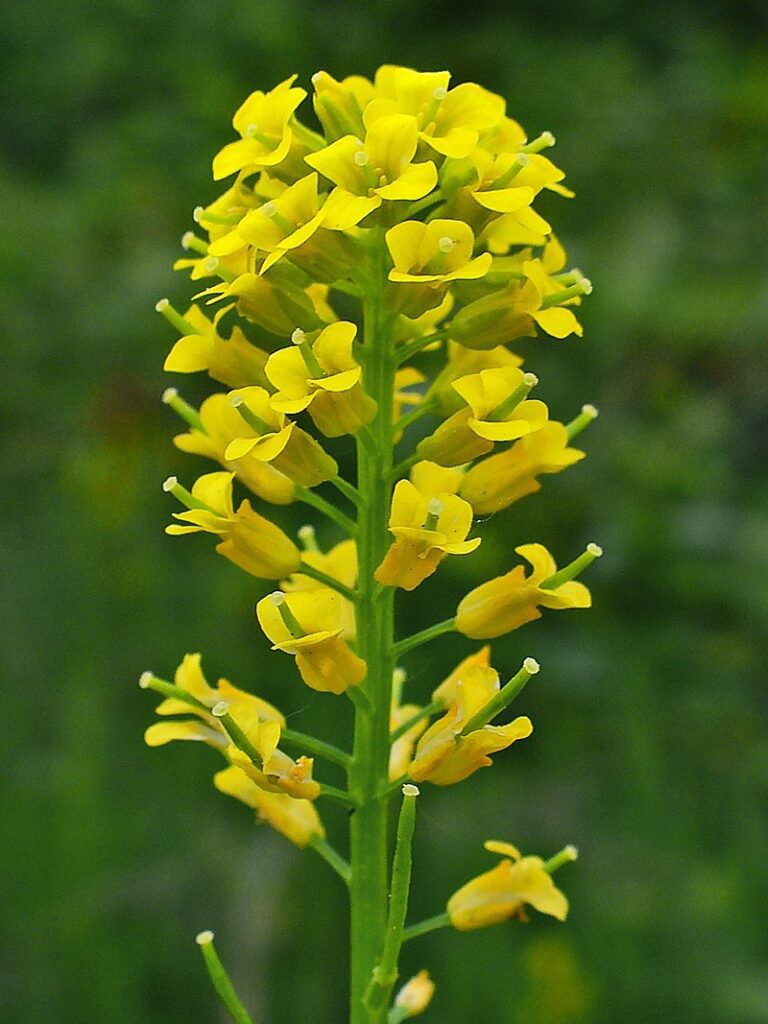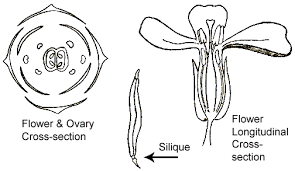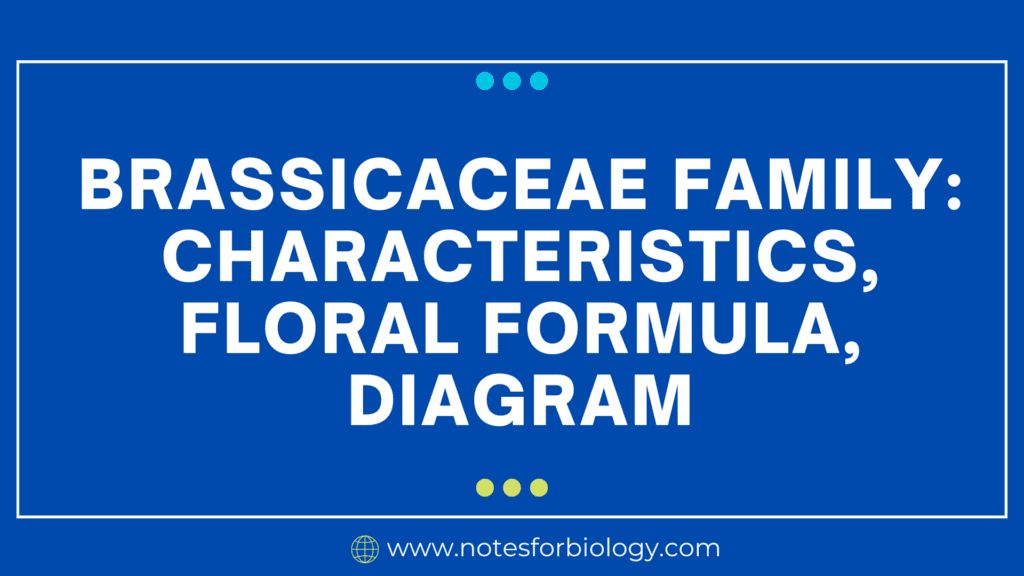What is Brassicaceae Family ?

With more than 3,700 species, the Brassicaceae family, sometimes referred to as the mustard family, is a sizable and varied collection of flowering plants. They include a vast variety of plants, from the modest mustard to the magnificent broccoli, and can be found everywhere in the world, from the Arctic to the tropics.
Table of Contents
Characteristics

The mustard family, or Brassicaceae, is a broad and varied genus of flowering plants with a wide range of culinary and therapeutic use. The following are some essential qualities:
Flowers: actinomorphic, rarely zygomorphic, hermaphrodite; gynoecium bicarpellary, syncarpous, parietal placentation, bilocular due to the formation of flase septum (replum); fruit siliqua or silicula.
Leaves: Usually lobed or serrated, simple or pinnately complex.
Typically herbaceous, stems frequently have a taproot.
Flowers: Racemes or corymbs of four petals each.
Cruciform, or cross-shaped, petals
Four sepals, grouped into two pairs.
Six stamens, grouped into two and four groupings (tetradynamous).
Pistil: One, featuring two stigma lobes and a superior ovary.
Fruit: A silicle, also known as a silique, which is a capsule that divides along two sutures.
Seeds : A multitude of tiny seeds.
Chemicals: Glucosinolates, which give many family members their strong taste, are frequently present.
Floral Formula:
- K4 C4 A2+4 G(2)
Where:
- K represents the calyx (sepals)
- C represents the corolla (petals)
- A represents the androecium (stamens)
- G represents the gynoecium (pistil)
- (2) indicates the number of carpels in the ovary.
Floral Diagram

Justification
The outermost circle is symbolic of the sepals, or calyx. Four sepals are grouped together in a cross pattern.
The corolla (petals) is represented by the middle circle. Alongside the sepals, there are four petals that are also arranged in a cross configuration.
Inner circle: Stands for the stamens, or androecium. Six stamens total—two clusters of four long (tetradynamous) stamens and two shorter stamens.
Centre: Symbolises the pistil (gynoecium). With two stigmas and a single style, the ovary is superior.
O: Stands for the ovary, which normally has two locules and is bicarpellate.
Crucial Elements of the Floral Diagram for Brassicaceae
Cross-shaped symmetry: The family name “Cruciferae” comes from the arrangement of the four sepals and four petals in a cross shape.
Tetradynamous stamens: The family is distinguished by the presence of four long and two short stamens.
Superior ovary: This flower component is situated above the other petals.
Bicarpellate: Two fused carpels make up the ovary.
Fruit: Typically, the fruit is a silicle, also known as a silique, which is a dry capsule that splits open at two points.
Examples of Brassicaceae Family Members
- Cabbage
- Broccoli
- Cauliflower
- Mustard
- Radish
- Turnip
- Horseradish
Economic Importance
Food Source
Many species, such as mustard, broccoli, cauliflower, and cabbage, are significant food crops.
Condiments
Mustard is made from mustard seeds.
Oil production
Certain species, including rapeseed and canola, are utilised to extract oil.
Ornamental Plants
Many are grown for their flowers, such as wallflowers and honesty.
Uses in Medicine
Certain species, like horseradish, have therapeutic qualities.
Frequently Asked Questions (FAQ)
What is Brassicaceae Family ?
With more than 3,700 species, the Brassicaceae family, sometimes referred to as the mustard family, is a sizable and varied collection of flowering plants.
How Brassicaceae Family can be used in medicine ?
It can be used in medicine because it has a certain species, like horseradish,have therapeutic qualities.
List the examples of Examples of Brassicaceae Family Members?
The examples of Brassicaceae Family members are
Cabbage
Broccoli
Cauliflower
Mustard
Radish
Turnip
Horseradish
Related Articles



